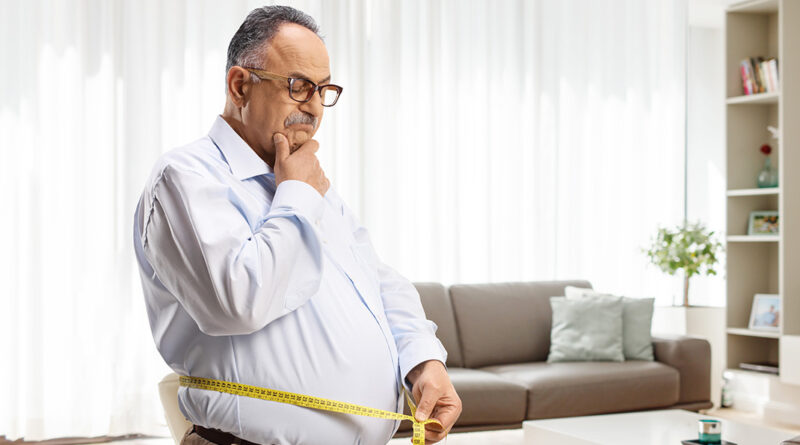Losing Weight After 55
Does it seem like the scale won’t budge? Try these tips
By Deborah Jeanne Sergeant
Does it seem like in your youth that you could inhale slice after slice of pizza, hardly exercise and not gain an ounce? But now just looking at food piles on weight?
Many people find that around middle age, their middles expand — along with other areas that tend to carry excess fat. But it is possible for people 55-plus to lose weight, despite a few challenges that come with the years.
Most of losing weight has to do with diet, although activity should be part of every person’s healthful lifestyle. “You can’t outrun your fork” means that you can’t entirely mitigate poor eating habits with exercise. It’s also vital to obtain proper nutrition and adjust that according to age.
“I think some people shy away from the word ‘diet’ because a lot of people have tried many diets and have been unsuccessful in maintaining the results,” said Jill Murphy, certified personal trainer, certified life coach and co-owner of Mission Fitness in Syracuse. “’Going on a diet’ gets a bad rap; however, in order to lose weight one must address their diet and make modifications to it in order to reach their goals.”
Instead of turning to fad diet — not a great idea, according to Murphy, as they’re not sustainable or balanced — a sensible eating plan will result in slow but maintainable weight loss.
People who want to lose weight need to look at not only what they eat but why they eat.
“One’s ability to process and deal with emotions can influence weight loss,” Murphy said. “Most people eat the high-sugar foods when they are under some emotions stress. Using food as an outlet or way of dealing with emotions can lead to significant weight gain. So being able to process emotions in a healthy way apart from the sugary processed foods is another crucial step for most people to lose weight. Hiring a life coach and learning these tools is a great way to begin to have a better relationship with food and having a healthier emotional outlet.”
A sluggish metabolism is often blamed for a pudgy body. However, cutting back on calories and working out can help make up for that effect. Murphy said resistance training is “crucial for a weight loss plan because after the age of 25, one will naturally begin to atrophy or lose muscle unless they do resistance training.”
She believes it’s the single most effective way to prevent muscle loss and that in part, that helps rev up the metabolism.
Randy Sabourin, 59, is a certified personal trainer and owner of Metro Fitness in Syracuse, also said that metabolism relates somewhat to muscle mass — and that resistance training is not just for the young.
“I’ve got 80-year-olds who are actively lifting weights but it’s important to teach proper form and that they don’t exercise to exhaustion,” he said. “You can’t have the body you had when you were 20. But you can still build muscle. So many people think they can’t get stronger.”
If old sports injuries are starting to surface, like that bum knee or janky hip, switching to an activity that’s easier on joints can keep you moving. Instead of running or skiing, try brisk walking, using an elliptical machine or swimming for example.
Swimming is particularly easy on joints because of the water’s buoyancy and warmth.
Of course, consulting with a personal trainer specializing in your type of injury or health condition can help you discover activities that both help you stay safe and burn calories.
It’s easy for a jammed schedule to push health to the back burner. Many people around age 55 are busy helping elderly parents while raising teenagers. It’s often the time that the career becomes particularly demanding. Squeezing in time for exercise becomes challenging. But picking an activity you like to do and joining a club or group can help you prioritize movement.
The Centers for Disease Control and Prevention recommends a minimum of 150 minutes of moderate aerobic exercise per week. If that’s going to be tough to fit in, high-intensity interval training can provide a condensed workout during time-pressed periods.
“More exercise isn’t always better,” Sabourin said. “Frequency is better, even if it’s less time. When I got up this morning, I still went down to get in a 30-minute weights workout in. It’s not my normal workout but it’s still worth doing.”
Although warming up is important to prevent injury, he encourages getting right into the “meat” of the workout for an efficient, 30-minute session with some heavy breathing. Leisurely strolls are better than nothing, but don’t result in significant weight loss.
Losing weight after age 55 can be challenging, but it’s not impossible.

